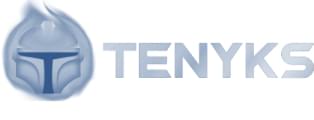The intricate realm of image segmentation demands precision, consistency, and scalability. Manual approaches, while invaluable in certain contexts, are often insufficient when dealing with extensive and complex datasets. This is where dedicated annotation tools for image segmentation step in, offering a multitude of advantages that propel projects to new heights of excellence.
1. Enhanced Dataset Accuracy:
AI-assisted data labeling tools, also known as interactive segmentation, can significantly improve the accuracy of datasets used for image segmentation. These tools automate certain aspects of the labeling process and allow human users to provide feedback on the machine-generated labels, thereby improving their accuracy.
One challenge faced by deep learning methods for medical image segmentation is that they require large amounts of manually labeled training data. Auto-labeling techniques can help speed up this process and improve accuracy. For instance, superpixel-assisted, region-based methods can be used for labeling images, which improves tissue classification and reduces errors during segmentation.
Another key consideration when working with CNNs for label-free cell segmentation is the quality of available datasets. Large datasets with high-quality images are necessary to accurately train these networks. Further advancements in this area could include developing techniques for more precise annotation of cellular structures using interactive imaging and AI-assisted tools.
Overall, enhanced dataset accuracy is crucial when it comes to improving image segmentation results. This requires a combination of skilled human input in dataset creation and automated machine learning techniques like auto-labeling with AI assistance. The potential applications of improved image segmentation technology are vast, including more accurate diagnosis and treatment planning in healthcare settings as well as advanced robotics hardware interoperability in manufacturing industries.
2. Time Efficiency:
Image segmentation tasks can be time-consuming and tedious, but AI-assisted data labeling tools have revolutionized the process. These tools use advanced algorithms to recognize patterns and identify objects within an image, making it easier for humans to label and annotate them quickly and accurately.
Data science teams are able to spend more time working on complex problems rather than mundane annotation tasks – leading to improved efficiency across various industries using AI-powered systems.
3. Capability to Manage Extensive Datasets:
The power of image segmentation tools cannot be overstated when it comes to precision labeling.
To ensure accuracy, the platform provides pixel-level quality assurance that allows users to correct segmentations in real-time and establish review workflows that ensure accurate labeling and annotation. In addition to this impressive collection of features, Keylabs offers tools for analyzing anthropomorphic features and detecting specific behavior patterns such as mood changes or gestures.
4. Annotation Consistency:
Achieving consistency in image annotation is crucial for proper use by computer vision models. This process requires a skilled workforce, as predetermined labels must be accurately assigned to digital images. While automatic annotation tools can speed up the process, they may introduce errors and inconsistencies. Manual annotation, on the other hand, can ensure high quality but can be time-consuming and costly.
To achieve precision labeling in image segmentation, a good understanding of the concept is vital. Image segmentation involves partitioning an image into multiple segments to locate objects and boundaries automatically. The process allows for easy identification of specific items within a larger image, making it simpler to annotate and analyze.
In conclusion, achieving consistency in image annotation takes skill and time to ensure proper use by computer vision models. Automated or manual methods carry their benefits but may simultaneously introduce errors or inconsistencies if not correctly executed during processing steps like refinement activities such as data labeling validation techniques aimed at improving accuracy through verification procedures utilizing two-stage modeling techniques with incremental updates calibrated against benchmark datasets identified based on performance objective metrics established beforehand within inter-rater agreement ranges appropriate considering differences arising from varying background knowledge levels or domain expertise relevant to producers' team members involved in generating annotations from video sources using semantic tags associated with footage captured across different geographic locations.
Rectangle masks specifying exact locations of elements marked during processing also help preserve labeling standards regardless of technical backgrounds among team participants involved in collaboration efforts while producing results aimed at satisfying objectives set forth at onset identified through communication channels maintained throughout production processes. Taken together these measures would promote greater confidence operator reliability even amid network connectivity issues arising during deployment testing periods adding value over time by ensuring stable performance across widely diverse ranges use cases.








